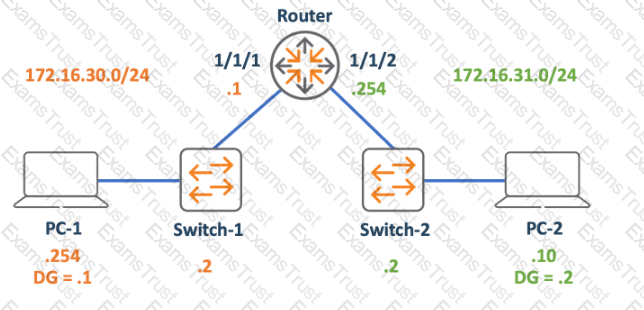What is a characteristic of IPv4 addresses?
Which OSI model layer is in charge of creating data?
Refer to Exhibit.

The PCs are not able to successfully establish bidirectional communication. What change must you deploy to enable the communication between PC-1 and PC-2?
Which protocol performs name to IP resolution?
Which characteristic allows switches to mitigate collisions?
Which protocol provides frame delivery using physical addressing and error detection using frame check sequence?
Which device provides high ethernet port density for connecting wired clients such as computers, IP phones, and printers? (Select two.)
Which represents a valid Basic Service Set Identifier (BSSID)?
Given the 172.16.0.0 255.255.255.0 IP segment, how many IP addresses can be assigned to host and network devices?
Which protocol provides logical addressing used for routing messages across the network towards their destination?
What is considered a Layer 2 component?
Which Wi-Fi technology assists with data privacy on open networks?
Before routers forward unicast packets, what information is compared with the unicast routing table entries?
What are the nonoverlapping channels for Wi-Fi communications in the 2.4 Ghz band?
What is a true statement about wireless communications using Wi-Fi?
How many addresses does the 255.255.252.0 provide?
How many IP assignable addresses are contained in 10.0.128.0/23?
Refer to exhibit:

PC-1 is sending a packet to PC-2. What are the Layer 2 and Layer 3 source addresses of the message when it is received by PC-2? (Select two.)